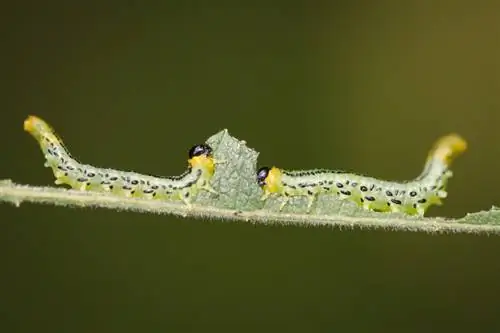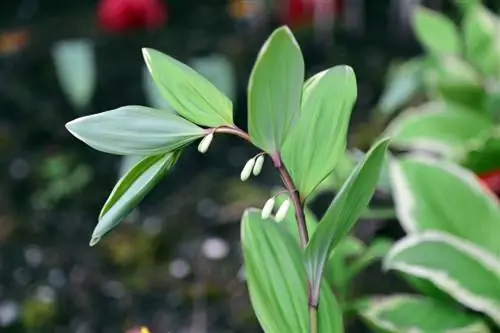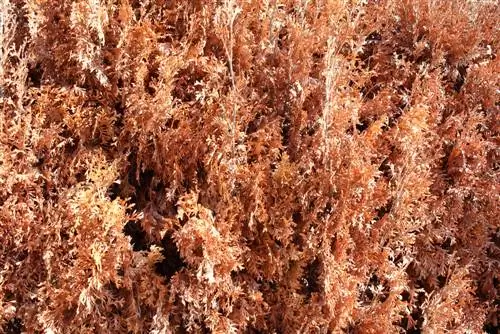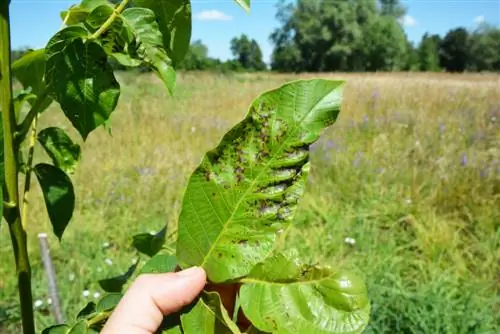- Author admin [email protected].
- Public 2023-12-16 16:46.
- Last modified 2025-01-23 11:20.
The Solomon's seal is not only an attractive spring bloomer on many forest edges in nature, the poisonous ornamental plant is also grown in shady locations in some gardens. If damage to the leaves of the “sweet-smelling whitewort” is suddenly discovered, then the caterpillars of the Solomon’s seal sawfly are usually to blame.

How do I protect the Solomon's seal from the sawfly?
In order to protect the Solomon's seal from the Solomon's seal sawfly, affected parts of the plant should be cut off and burned in a controlled manner. Caterpillars can be collected wearing gloves without using pesticides.
Identifying the Solomon's seal sawfly
The adult specimens of the Solomon's seal sawfly look relatively inconspicuous and can sometimes be confused with flies due to their shiny black and smoky gray coloring. While these adults do not cause any direct damage to the plants, the caterpillars in the larval stage pose a danger as they sometimes only leave rib-like structures on the leaves of the Solomon's seal. The caterpillars are light grey-greenish or almost whitish in color, sometimes a little bluish as they get larger. The caterpillars are relatively easy to identify visually by:
- a powdery wax coating
- black thoracic legs
- a round, black head capsule
Lifestyle and development stages of the Solomon's seal sawfly
The adults of this sawfly hatch in spring and fly around the host plants during the mating season from mid-April to mid-May. The females then lay their eggs in the stems of the Solomon's seal using a saw-like ovipositor. After the larvae hatch at the end of May, the growth phase of the rapidly developing caterpillars usually only lasts about 2 to 3 weeks. The larvae then pupate in a cocoon in a hole in the ground before the cycle begins again the next spring. Since the Solomon's seal sawfly is very loyal to its location, damage to the plants occurs repeatedly without countermeasures being taken.
Protect the Solomon's seal in the garden from the sawfly
Often the caterpillars responsible for damage to the leaves are not discovered straight away because they are mainly on the underside of the foliage when exposed to sunlight. In general, no chemical pesticides are necessary if you simply collect the caterpillars with gloves. If individual stems of your plants show reddish discoloration, which indicates egg-laying by the Solomon's seal sawfly, the affected parts of the plant can be cut off promptly and burned in a controlled manner.
Tip
If you only notice individual feeding spots on a larger population of Solomon's seal (Polygonatum odoratum), countermeasures are not absolutely necessary. Infected plants are weakened, but do not automatically die as a result. For gardeners interested in insects, observing the Solomon's seal sawfly and its special defense strategy of “reflex bleeding” can be quite interesting.






